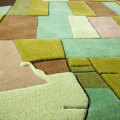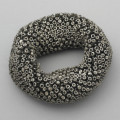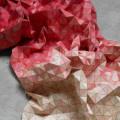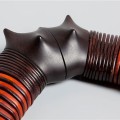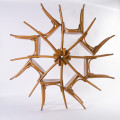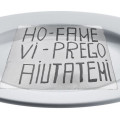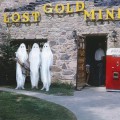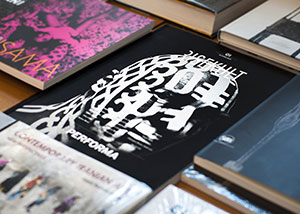The artist’s hand plays with nature’s creatures in strange and unexpected ways, rearranges and recomposes them harmoniously, transforming their original essence. With this creative and imaginative liberty, elements are associated according to their colours, light or brightness, energy and strength, and acquire a new life and identity. Therefore, pieces of wood washed ashore by the tide can be associated with minerals from distant caves; white exotic corals look like the open corollas of flowers showing their pistils of black tourmaline; flakes of bright green malachite delicately rest on hearts of volcanic lava.
It is surprising to see how such different pieces can actually be complementary to each other, through their unique combinations of elements. Besides, their creator does not use metal settings or pins.
Claudine Dupeyron, the artist and architect behind these extraordinary creations, explains: “I is as if I felt love at first sight for them and embraced or hugged them when I create them. During my long walks on the beaches of the French Riviera, I look for those simple, but at the same time meaningful, and personal gifts that the sea can give us. Wood shapes fascinate me, and the pieces washed ashore feel like velvet to the touch. They have been modelled by the sea, and they have suffered during their journey and their metamorphosis. They remind me of myself. We are so alike! I then choose the minerals, the stones and corals. When I look at them, the conjunction between such different pieces is immediate, as if they had long been expecting and looking for each other. I assemble them together with invisible and natural resin, so that it won’t damage them or alter their nature. It actually leaves them the way I found them. As a matter of fact, it is nature that completes a most complex process or journey by totally reshaping and transforming wood, or cork, or other natural elements. I feel it is my duty to give them back their lost, or merely forgotten, dignity.”
Claudine Dupeyron’s handicraft jewels are the expression of her originality, of a logic of free association, and of her empathy with her material. They not only have natural origins, but they are also the result of her imaginative recreation of them, and of her sentimental relation to them, “with all the clear illusions that the heart needs” (F. Garcia Lorca).
Claudine Dupeyron: Pieces of Light
AUTHOR: Alessandro Turci
CREDITS: Photo by Giorgio Attanasio
COMMENTSRELATED POST |
|
|
|
|



























